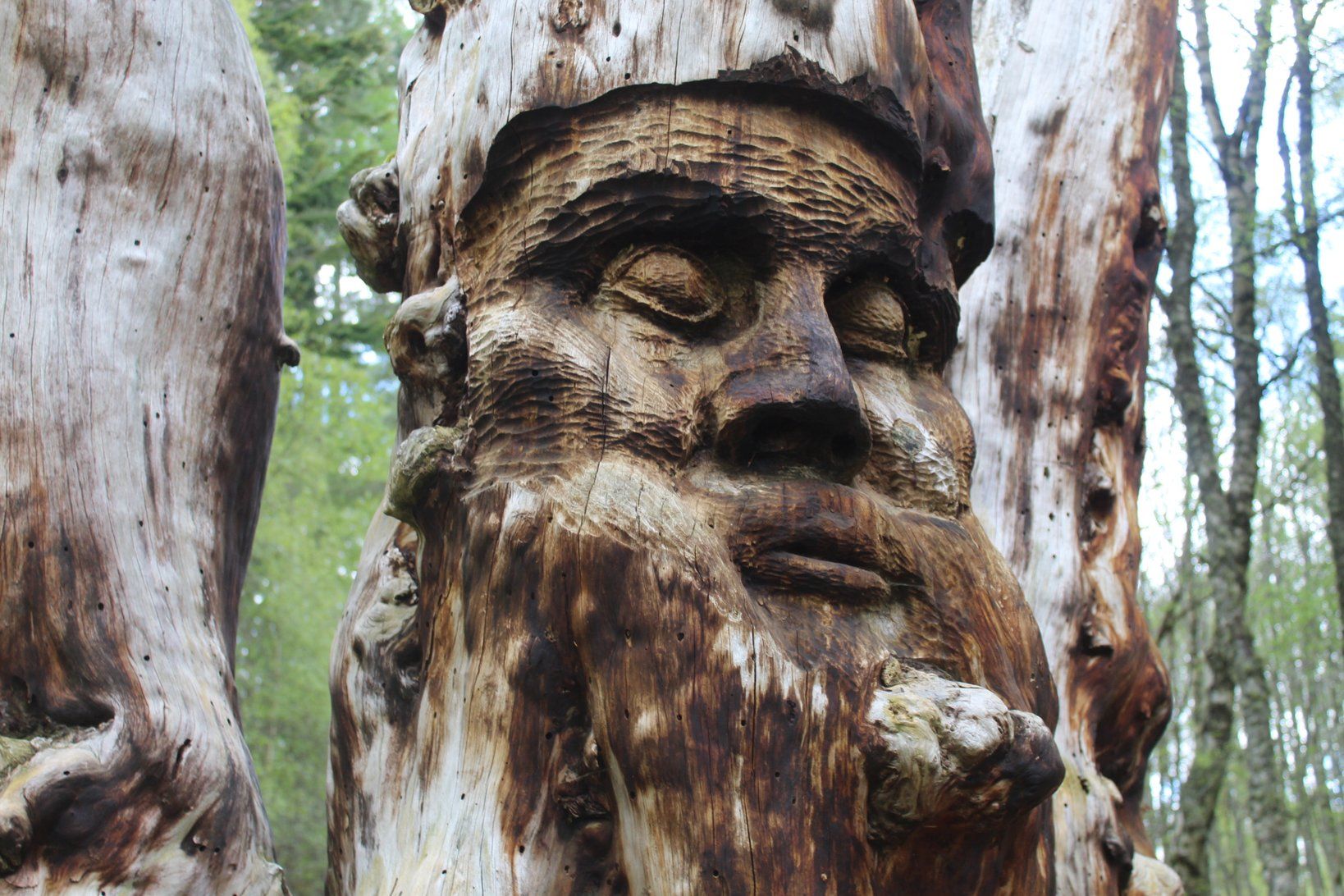In the damp, leafy forests of Feshiebridge, a workman stares at a belted knight. Both are carved intricately into old trees. The workman clutches a spade between his hands. The knight holds a longsword. The knight looks with disdain at the exhausted worker, but both stand with dignity, and there is a skull carved into the rotting wood above each of their heads. It's this symbol of mortality that explains the piece: nobility or worker, we all return to dust.
The art smells and feels. It wets and dries; stiffens and softens depending on the weather. It is art which lives and dies.
We’re walking along the Frank Bruce Sculpture Trail in Inshriach Forest, a one-mile, wheelchair-accessible trail and open-air art gallery in the Cairngorms.
The trail showcases the works of the eponymous artist Frank Bruce (1931-2009) - and the piece with the knight and the workman is very typical of Bruce’s work.
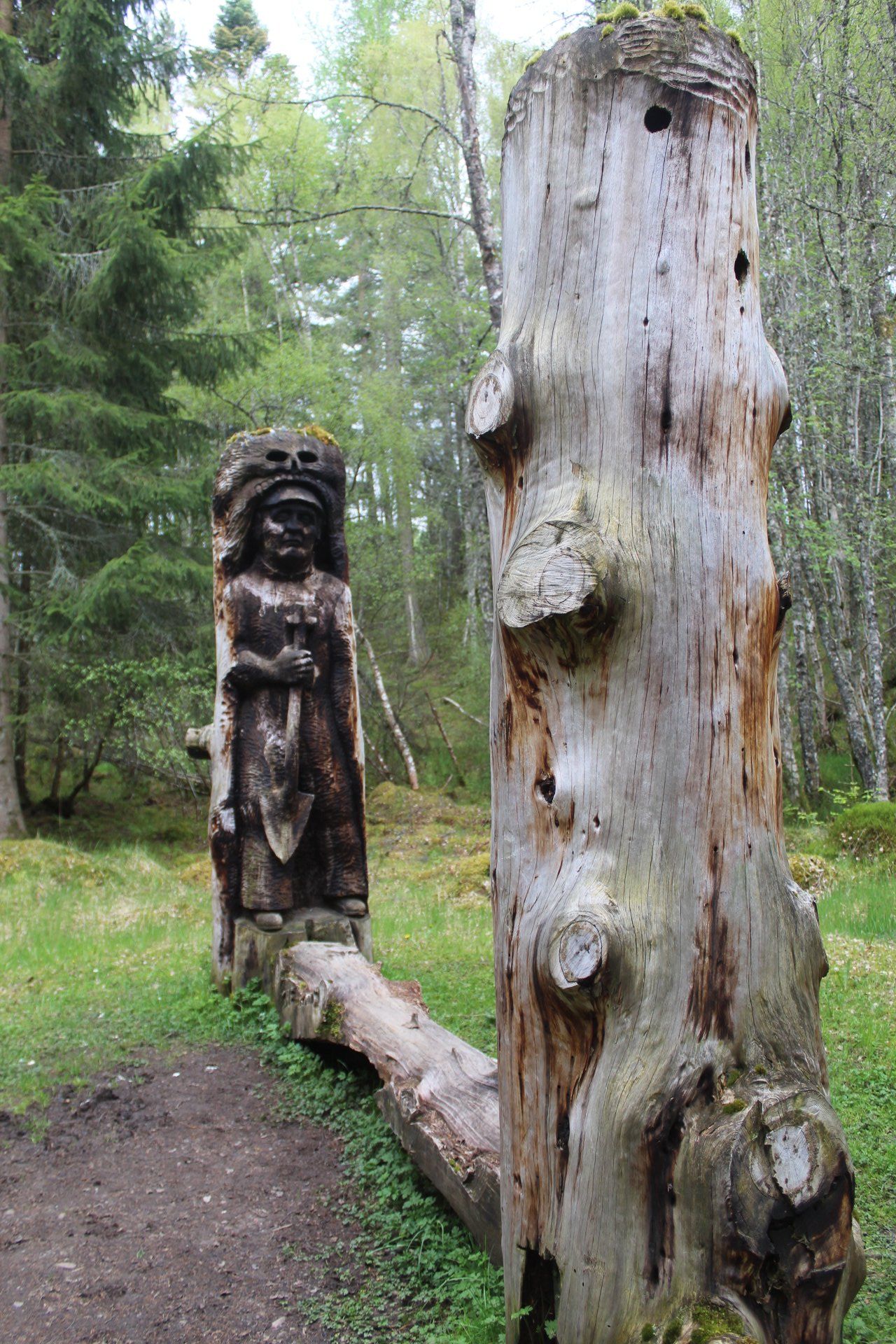
Inspired by the poem A Man's a Man for a' That by Rabbie Burns, the knight and worker are part of a piece entitled The Man's the Gowd - ‘gowd’ translating from Scots to English as ‘gold’. Bruce’s work often explores patriotism and poverty, and offers philosophical and socio-political commentary on the human form.
Frank Bruce left school at 13 to work in a sawmill. Born in a fishing village in Aberdeenshire, he was the youngest of nine, and taught himself to read using comic books. He never wrote much about his own work. “If I could write adequately to explain the shapes and feelings I am endeavouring to create,” Bruce once said. “I would be a writer.”
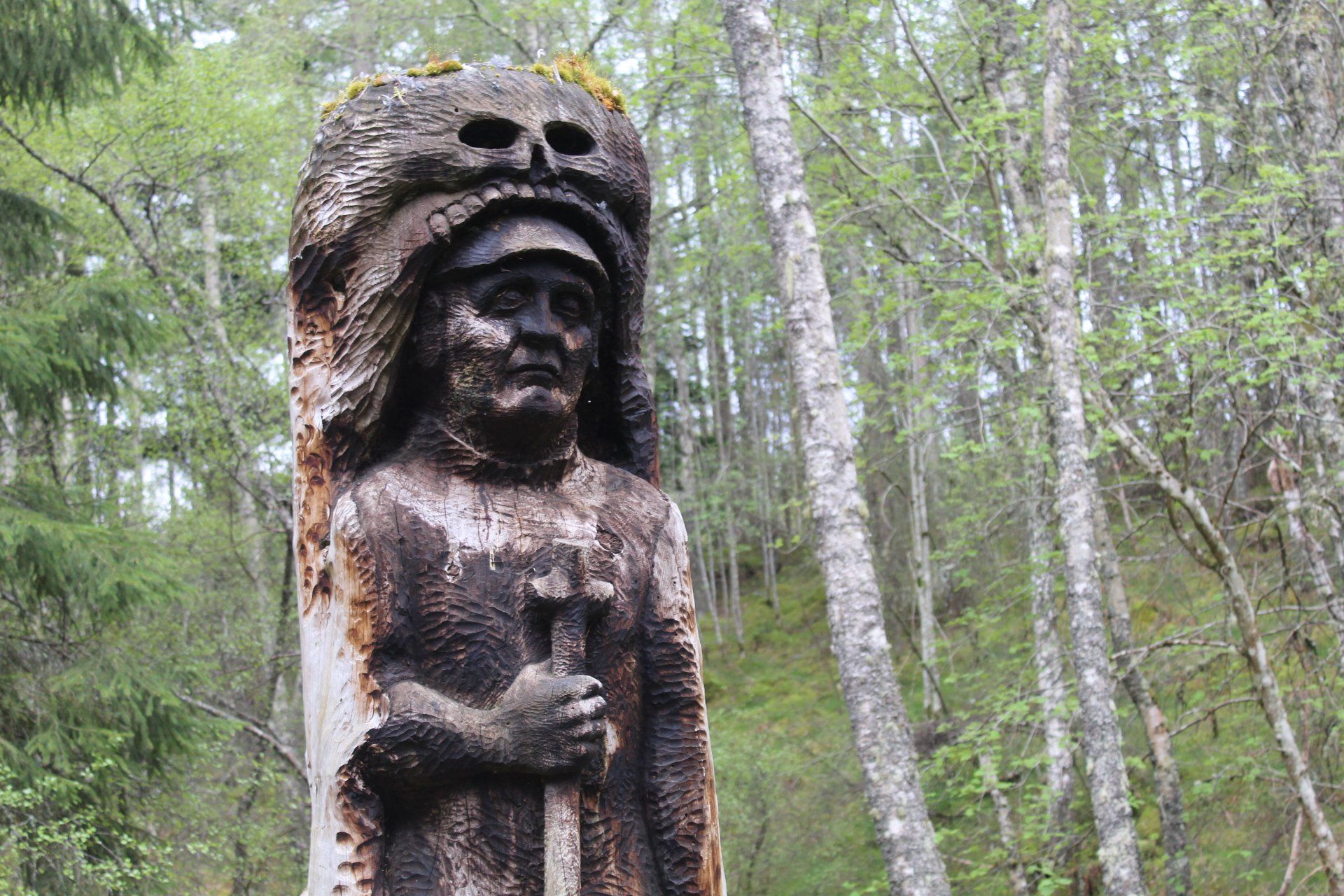
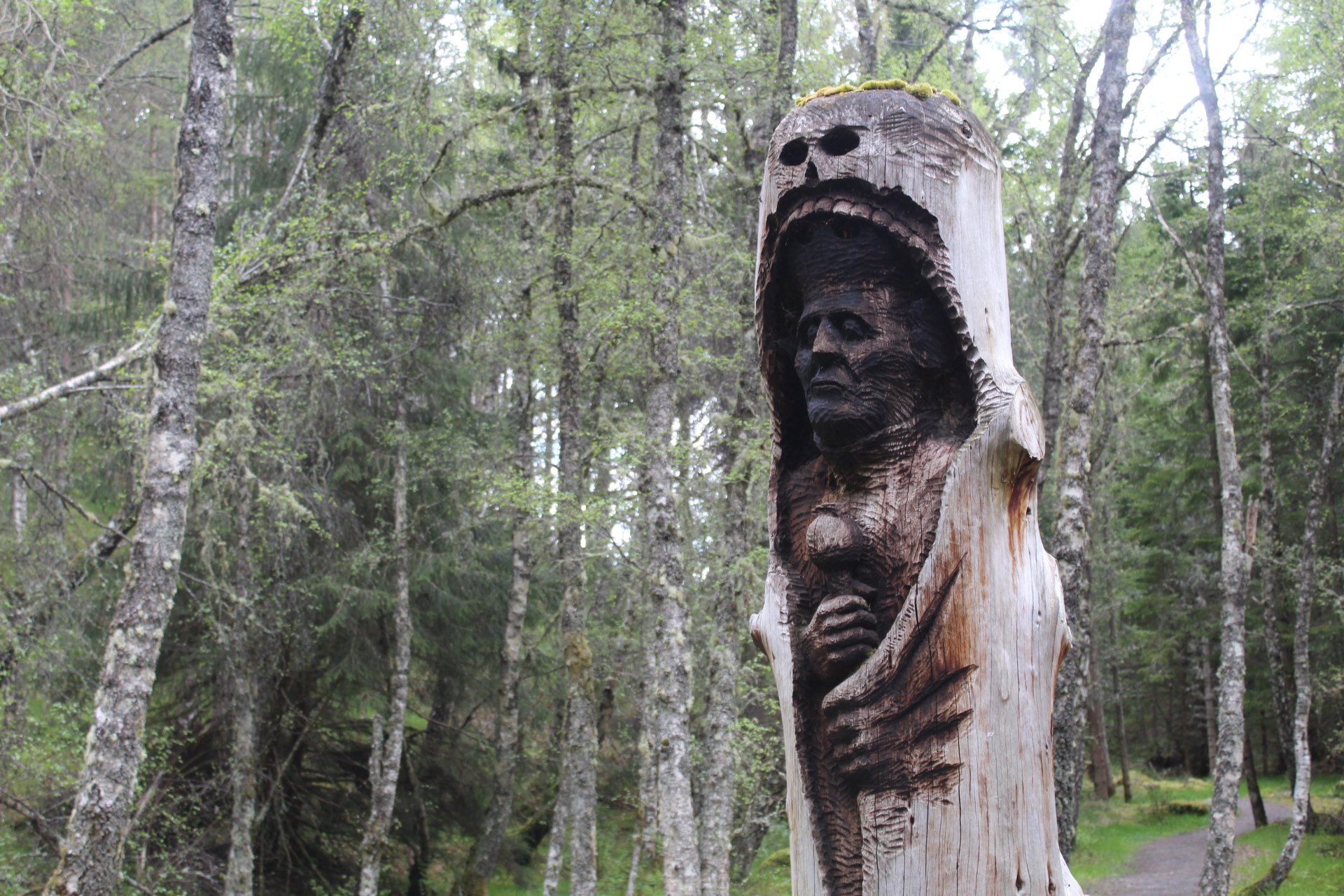
Bruce encountered the art of sculpture by chance, when an acquaintance lent him an encyclopaedia. Jenny McBain states, writing in The Scotsman, that “he discovered Greek sculpture and was captivated by the way the ancients had expressed themselves in three dimensions without a need for written language.”
Bruce would go on to make his money as a manual worker, but in his spare time he would be usually be chiselling and working with wood. Before long he was an acclaimed, self-taught sculptor, and in 2007, in collaboration with the Forestry Commission, the Frank Bruce Sculpture Trail was opened.
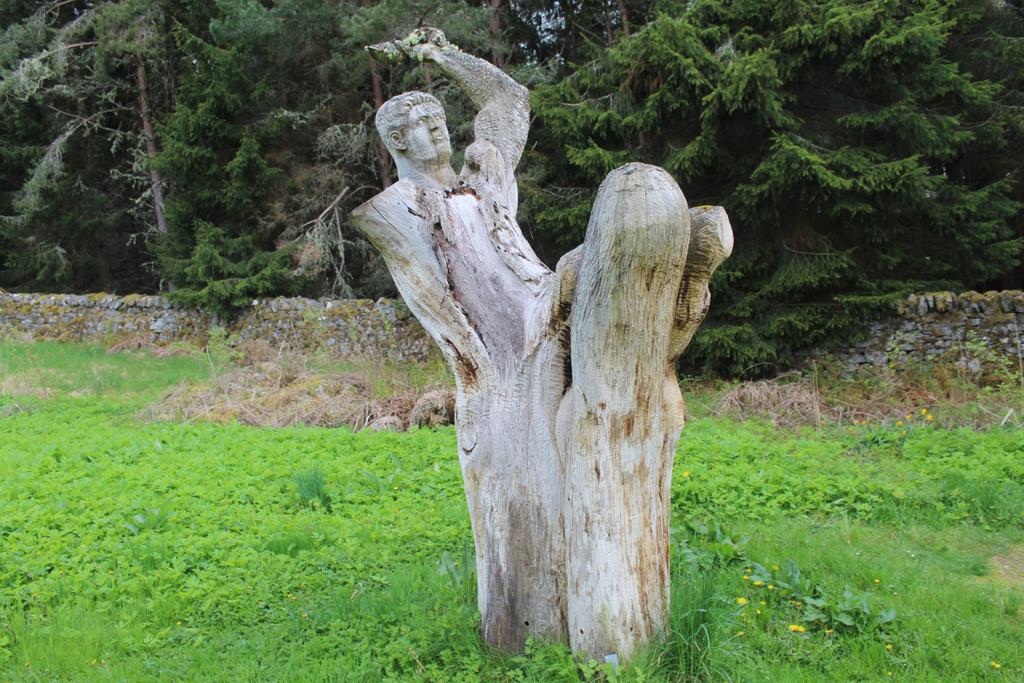
The forest is wet when we visit. The fresh scent of the conifers and larch trees wafts through the air. Bruce’s sculptures are dotted around the one-mile route in Inshriach Forest in Feshiebridge, each subject to the fluctuations and fancies of the natural world. Coal tits and robins flutter around the gallery. The sculptures take the brunt of any rain or snow which falls, watching as the seasons roll through the Highlands. The lighting is decided by the time of day and the cloud cover.
To put these sculptures anywhere else - between walls, under a roof or to charge a fee to visit - would be to rip away their meaning. The art smells and feels. It wets and dries, stiffens and softens depending on the weather. It is art which lives and dies. Bruce's obituary stated that "Frank refused contact with the commercial art world and would never put a price on his work. He insisted that it should always be available to everybody free of charge."
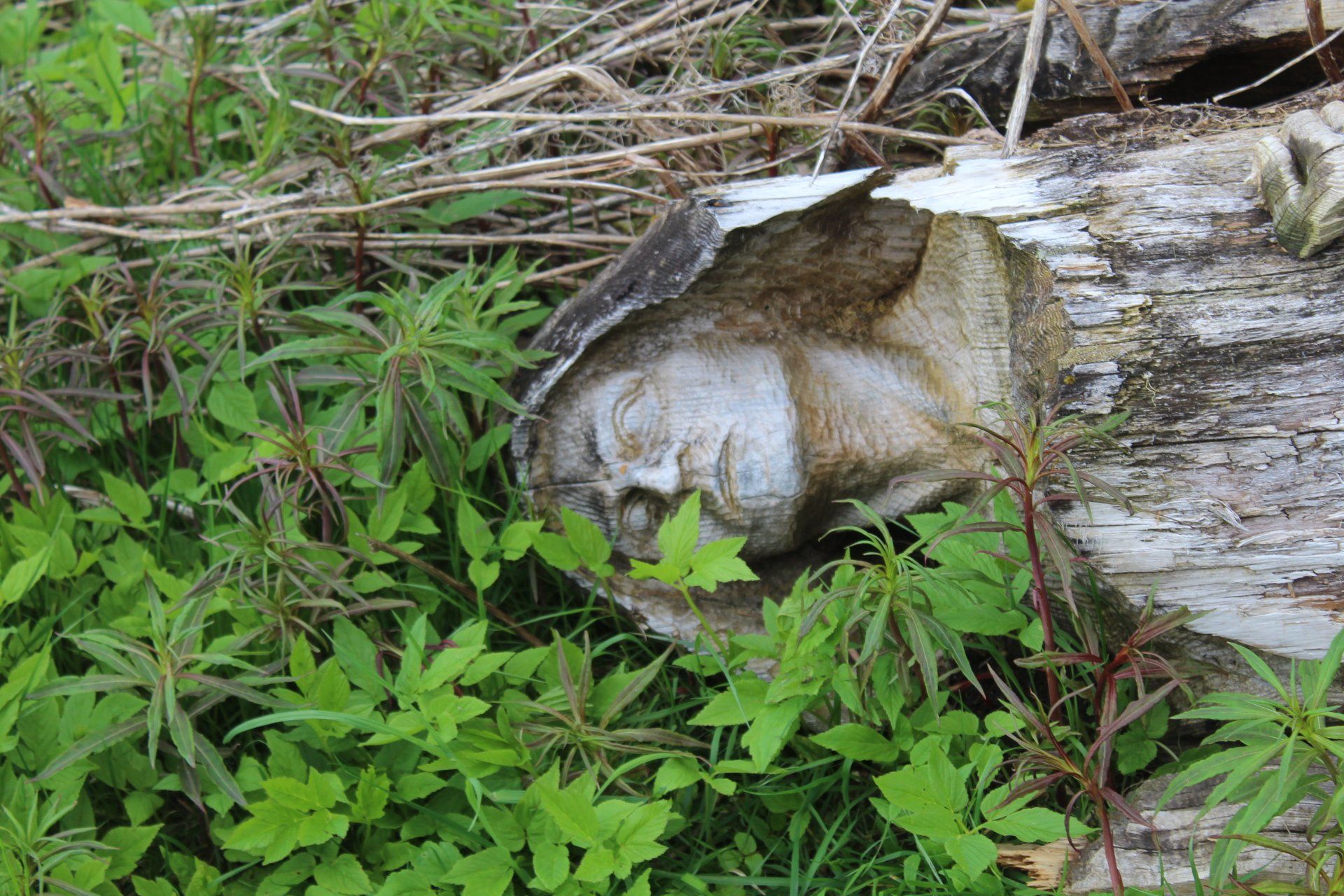
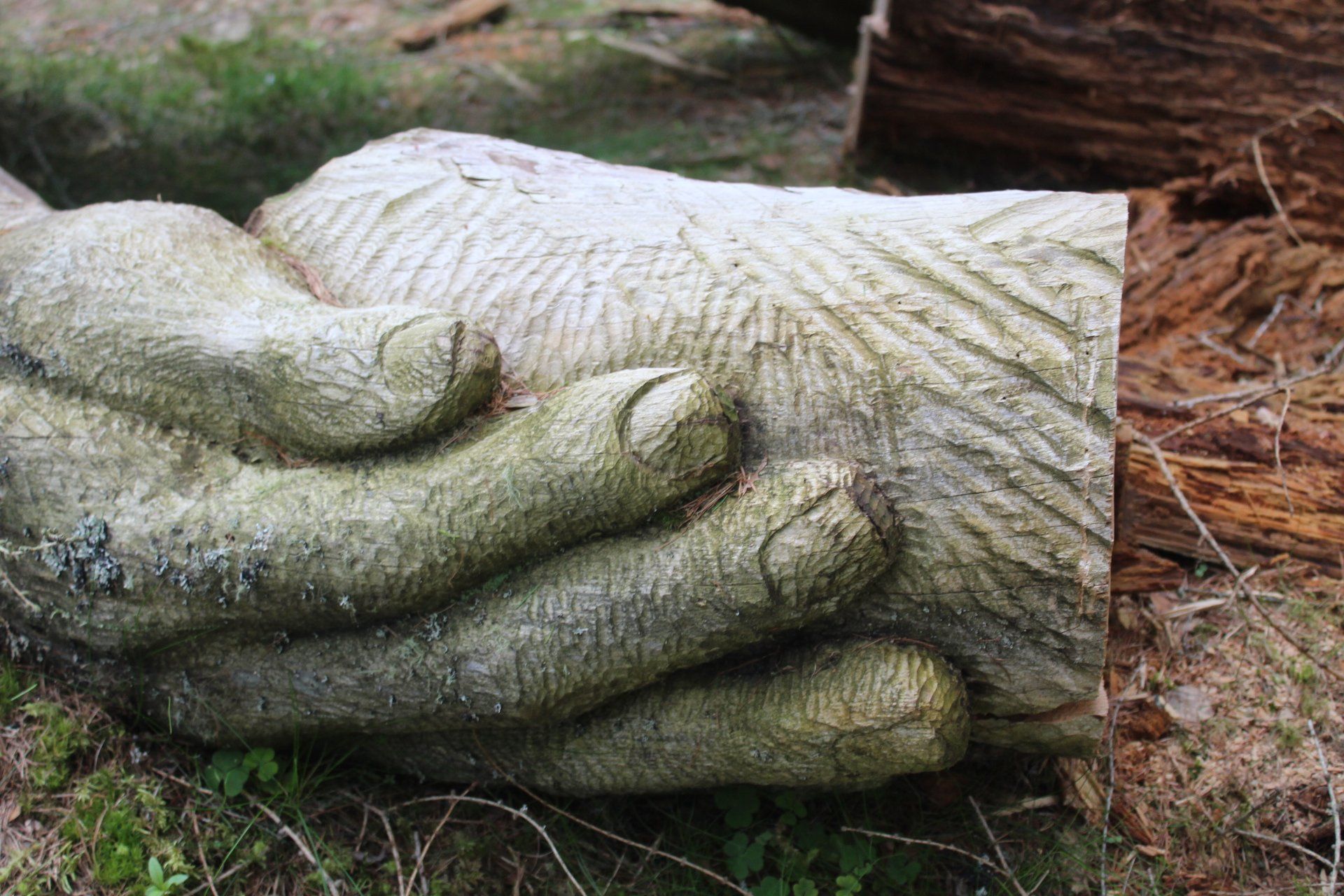
The Archetype, pictured top, welcomes people into the trail. It's been gnawed at by birds and hollowed out, but it retains an elegance and air of wisdom.
Another piece, The Thinker, looks down on a pond, its face reflecting back in the water, completing its circle of thought. The natural bulges and burrs of the wood make it seem like there is a cloak waving in the wind beneath the carved face.
The Walker, meanwhile, is an enormous, eight metre sculpture. It's an upside -down tree, and seems to be in mid stride, clutching a walking pole for support.
The canvas is always a crucial part of Bruce’s artwork. The sculptor worked with whatever knots, lines and bends nature gave the wood. And his work encourages you to look for natural art as you wander the forest; the shapes formed between branches, or the winding curves on the bark of the pines.
Bruce’s art both blends into the environment and startles upon discovery. Some works have begun to rot and have been laid down flat. Seeing an anguished face being reclaimed by the forest only adds to the recurring themes of mortality and ruthlessness which are explored.
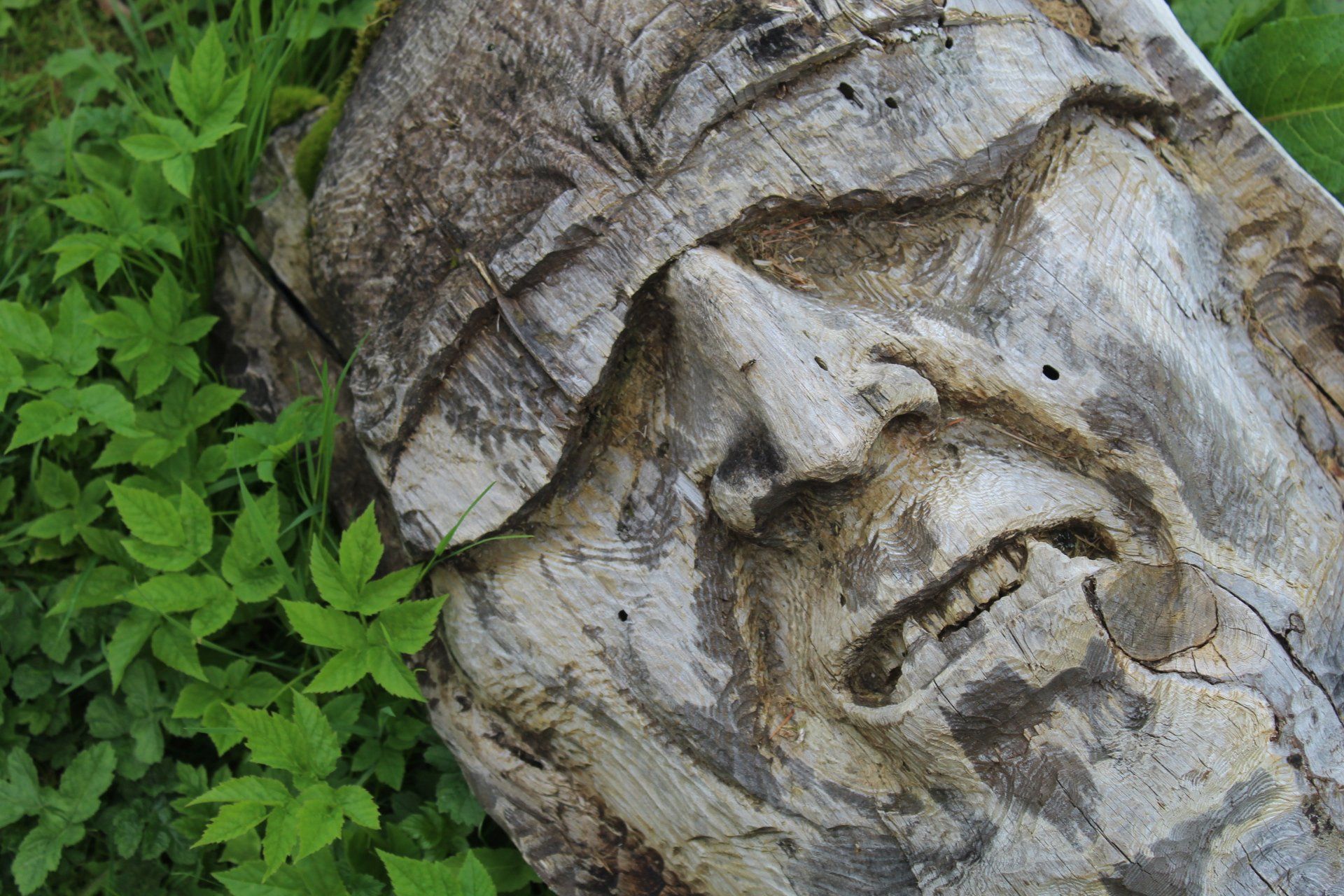
The artist "saw these tortured and tormented figures and powerful figures within these dying trees," said Valerie Fairweather of the Frank Bruce Trust.
Many of Bruce’s wooden works are carved on reclaimed Scots pine wood which originally grew in Inshriach Forest - and now they are returning to its soil.
Art, like nature, is part of our natural cycle of birth, life and decay...
The stone sculptures of Bruce will live longer than the wooden artworks. One such stone simply bears the carving: “I was privileged to be.” Another, more haunting sculpture depicts a screaming sailor. It is said to have been inspired by the sculptor’s brother, who was trapped on a sinking battleship in WWII.
Perhaps it was this incident which led to Bruce's fascination with with patriotism and history. Another sculptures depicts two figures facing each other, both missing an arm. “Hitler needed patriots and Churchill needed patriots,” Bruce once said of the piece. “I’m not saying patriotism is wrong; I’m just saying if Hitler hadn’t had patriots he would not have been able to go to war himself.”
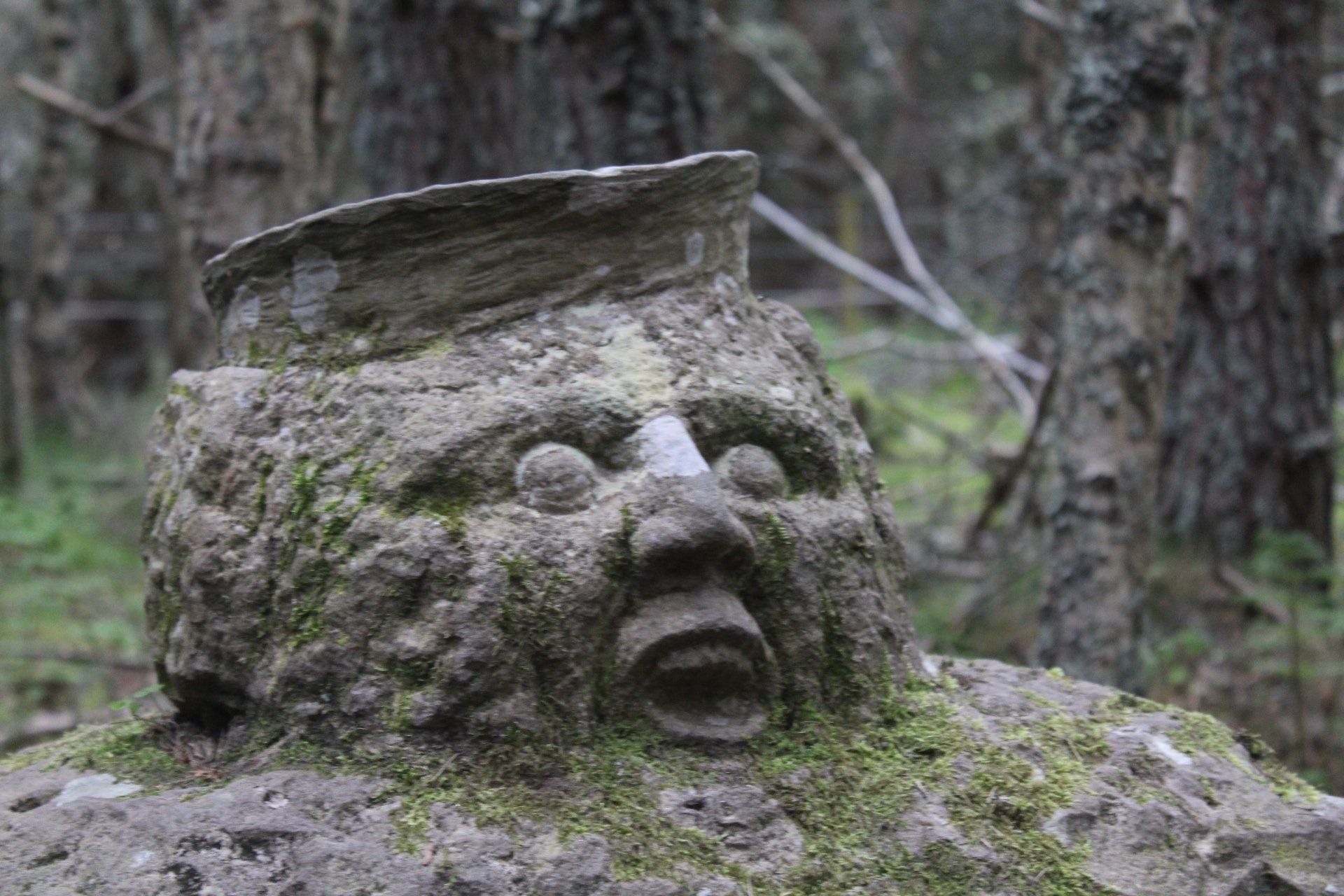
The area is quiet. To find the Frank Bruce Sculpture Trail, you need to know that it’s there, or stumble across it while walking the river. You can combine the walk with a stroll up lower Glen Feshie to form a three-mile loop which follows the River Feshie, and which you can walk in an hour or so.
Nearby, kayakers splash around Loch Insh, at the lower end of Glen Feshie. It’s just 20-minute’s drive from the outdoor hub of Aviemore.
The valley beyond is renowned for rewilding. Glen Feshie is where, The Guardian writes, "the forest has been released from the tyranny of grouse and deer." Pine and birch woodland have been returned to the area, and they climb up the hillside and merge into the mountain woods, shrubbery and vegetation.
In Feshiebridge, Bruce’s artwork slowly returns to the forest floor - highlighting his belief that art, like nature, is part of our natural cycle of birth, life and decay.
Inspired? Check out our range of Scottish adventure holidays now!

